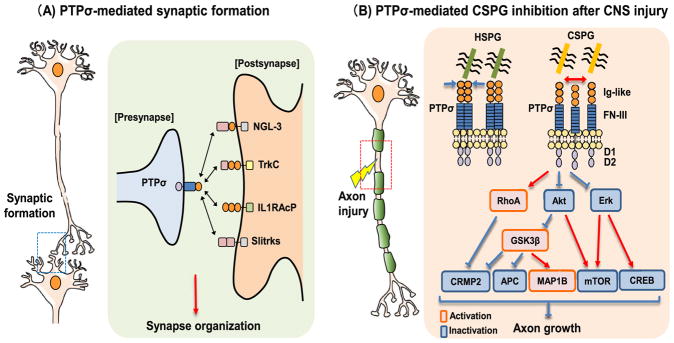Fig. 1.
PTPσ is important to regulate synapse formation by interacting with several postsynaptic proteins (A) and to mediate CSPG inhibition of neuronal growth as a receptor through multiple intracellular pathways (B). (A) PTPσ is localized to the growth cone at axonal tip in immature neurons during development and serves as a presynaptic hub by interacting with diverse postsynaptic partners, including NGL-3, TrkC, IL1RAcP and Slitrks, thus regulating the synapse formation in developmental neuron. (B) PTPσ can bind both HSPGs and CSPGs. Binding with the former induces PTPσ clustering and inactivation, promoting axon growth. In contrast, binding with CSPGs prevents PTPσ dimerization and activates this receptor and its downstream signaling pathways, inhibiting axon growth after CNS injury. Intracellularly, activation of PTPσ by CSPGs activate RhoA-Rock signaling and inactivate Akt and Erk pathways. Activation and/or inactivation of these signaling pathways mediate CSPG inhibition by other downstream signaling molecules, including GSK3β, CRMP2, APC, MAP1B, mTOR and CREB. Ig-like: immunoglobulin-like domains; FN-III: fibronectin type III domain; D1: D1 catalytic domain; D2: D2 non-catalytic domain.

